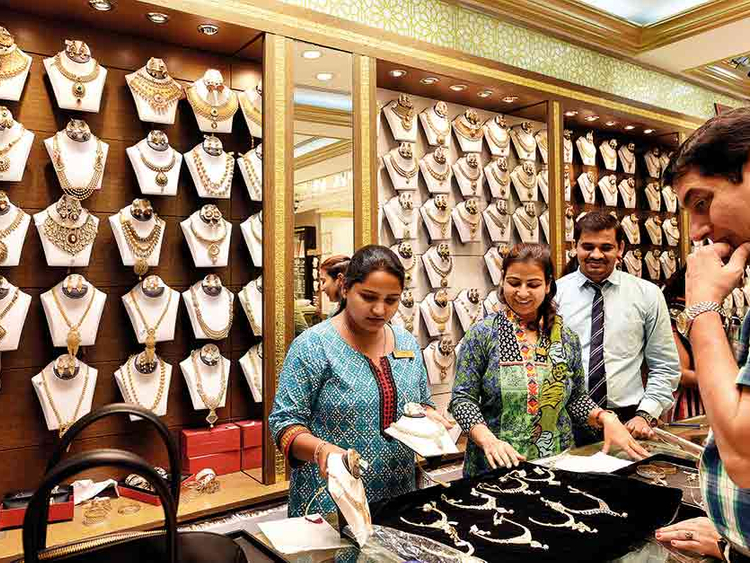How do you attract millennials to a festival that was rather low profile until about a decade ago? Seemingly, by playing on their insecurity about relationships, love and money.
Online jewellery retailer Blue Stone, for instance, sells a Kuber Yantra, which not only helps attract abundance but also love and good relationships, on Akshaya Tritya. This once subdued festival has gained a life of its own over the past few years. With its origins in Vedic times, the festival has recently been monikered the Day of Gold by jewellers, who witness a brisk uptick in sales.
Siddhartha Sacheti, CEO, Jaipur Gems, says the festival has gained momentum over the past ten years because the middle and upper-middle classes see buying gold on a day like this as an act of both worship and a means to attract abundance since Akshaya Tritya is considered an auspicious day.
“This is particularly true for the south of India and markets such as Dubai, where we sell a lot more on this festival. In a bid to attract the younger generation, we have tweaked our designs to be more modern. Contemporary gold jewellery can be worn with even a Western look, say with a dress or a good top.”
Mythologist, culture consultant and writer Devdutt Pattanaik explains that buying gold isn’t just another reason to enjoy India’s favourite indulgence.
“Astrologically, the stars and planets are aligned in a way that wealth creation and attraction are said to be at its peak. The act of buying gold is rather ritualistic and symbolic; we hope that our stars align in a manner that wealth and abundance enter our homes.”
There’s more to the festival than just wealth. As per ancient Matsya Purana, it is also about charity, yajna and chanting, all of which yield inexhaustible fruits. Several kinds of pujas are held across India: People pray to the horse, since in Hindu mythology it represents Mars and is propitiated by those dealing with anger issues or suffering agitated minds. There is Griha Pravesh puja, an auspicious day for moving into a new house. There’s Gou puja, the mandatory cow worship for abundance and a smooth marital life.
But the worship that beats all others is Kuber puja, which propitiates Lord Kuber, the richest of gods. We live in material times and the popularity of festivals that promote wealth generation is an expected fallout. A demographic shift in urban India has seen a much larger younger population taking purchasing decisions. According to the World Gold Council’s 2017 report, young Indians are investing in the yellow metal, which they once shunned. Interestingly, the report acknowledges how gold purchases see a huge jump during festivals such as Dussehra, Diwali and Akshaya Tritya.
Queenie Dhody, socialite and jeweller, believes that the rich buy jewellery all year around, but on a festival like this, the purchasing definitely sees a spike. “People may buy one statement jewellery piece, but they do get one because of the significance of the event.”
Shobhaa De, who grew up in Maharashtra, a state where Akshaya Tritya is huge, remembers married women exchanging turmeric and vermilion and praying for their husband’s long life. “In elite circles, [the festival] is now more about wealth and abundance.”
Is it any wonder then that Indian stock exchanges allow trading until 8pm in gold exchange traded funds that allow buying and sale of the yellow metal in the electric format?
What you need to know
What is Akshaya Tritiya?
One of the most auspicious days for Hindus and Jains, Akha Teej or Akshaya Tritiya, as it is popularly known, is celebrated with great fervour in many parts of India. In Sanskrit, the word Akshaya means eternal, while Tritiya means third. Observed on the third day of the Indian lunar calendar in the month of Vaisakh, this is the day to welcome wealth, prosperity, joy and success in new ventures.
Legends
There are a number of legends associated with the origin of Akshaya Tritiya. It is widely celebrated as the day when Annapurna, the Hindu goddess of food, was born. This was the day when Draupadi in Mahabharata received the akshaya patra, meaning inexhaustible vessel in Sanskrit, from Lord Krishna. She later used it to serve food to her family and the underprivileged. Following this tradition, many families on this day prepare food in large quantities and give some away to the poor. Akshaya Tritiya was the day when Veda Vyas started writing the story of the great Indian epic Mahabharata.
Akshaya Tritiya will be celebrated on April 18.












